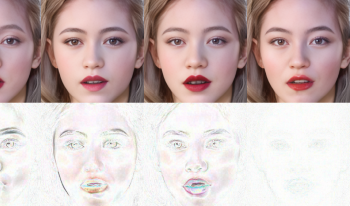
Multimedia forensics is an important field addressing the increasing misuse of digital content, such as deepfakes and face-swapping technologies. This paper focuses on detecting face swapping. Our goal is not to decide whether face swapping has occurred. We assume that we execute a forensic investigation in which it needs to be learned which photo of a person’s face has been used for the face swap. We take a number of potential source face photographs and compare their behavior when reproducing the face swap. We show that the photo used for the face swap can be identified even after lossy compression and scaling.

The ability to synthesize convincing human speech has become easier due to the availability of speech generation tools. This necessitates the development of forensics methods that can authenticate and attribute speech signals. In this paper, we examine a speech attribution task, which identifies the origin of a speech signal. Our proposed method known as Synthetic Speech Attribution Transformer (SSAT) converts speech signals into mel spectrograms and uses a self-supervised pretrained transformer for attribution. This transformer is pretrained on two large publicly available audio datasets: Audio Set and LibriSpeech. We finetune the pretrained transformer on three speech attribution datasets: the DARPA SemaFor Audio Attribution dataset, the ASVspoof2019 dataset, and the 2022 IEEE SP Cup dataset. SSAT achieves high closed-set accuracy on all datasets (99.8% on ASVspoof2019 dataset, 96.3% on SP Cup dataset, and 93.4% on DARPA SemaFor Audio Attribution dataset). We also investigate the method’s ability to generalize to unknown speech generation methods (open-set scenario). SSAT has high performance, achieving an open-set accuracy of 90.2% on the ASVspoof2019 dataset and 88.45% on DARPA SemaFor Audio Attribution dataset. Finally, we show that our approach is robust to typical compression rates used by YouTube for speech signals.